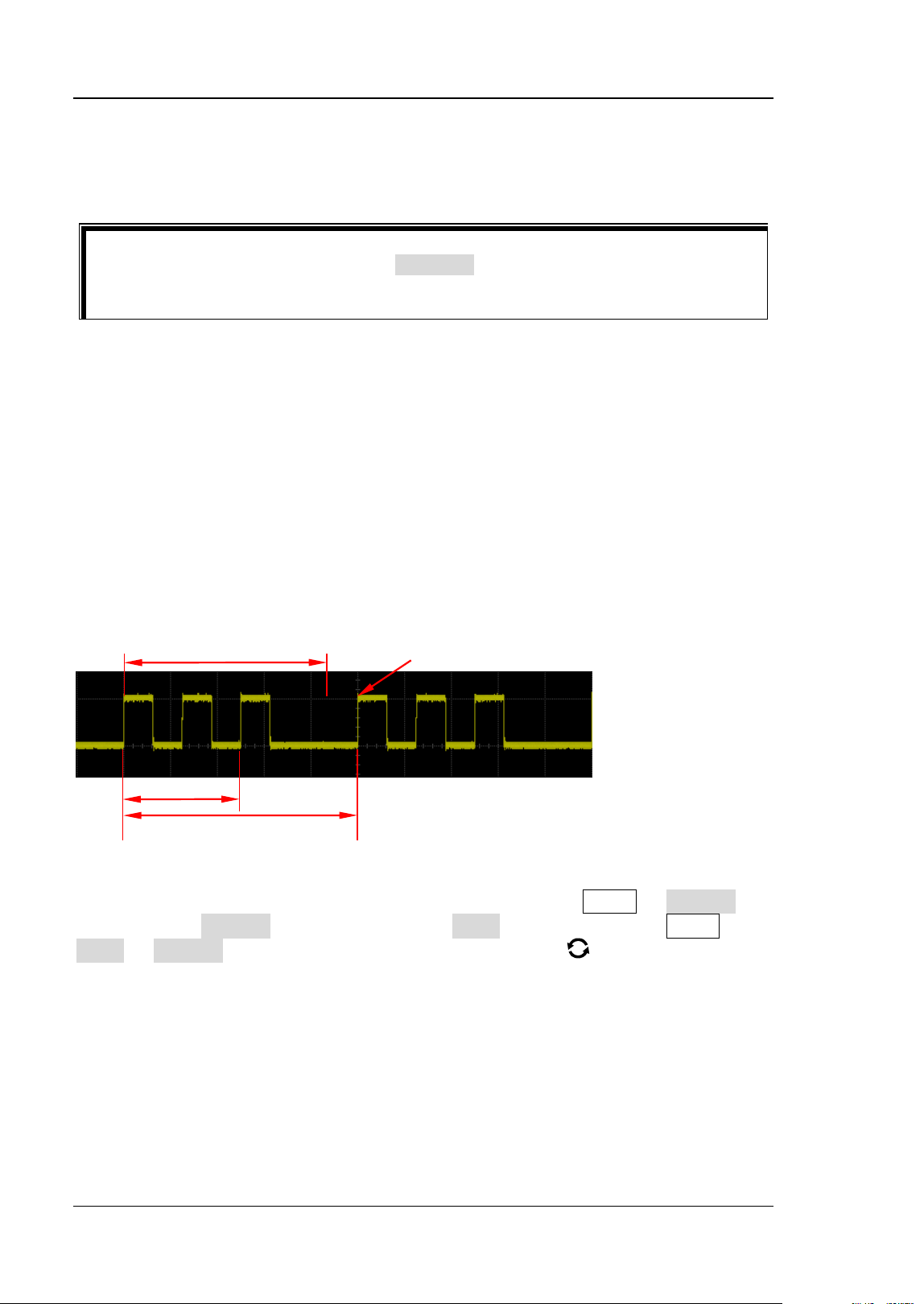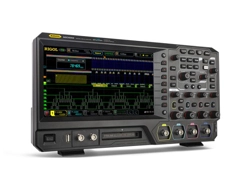Loading ...
Loading ...
Loading ...

RIGOL Chapter 5 To Trigger the Oscilloscope
5-6 MSO5000 User Guide
⚫ AC: blocks the DC components and attenuates signals.
⚫ LFR: blocks the DC components and rejects the low-frequency components.
⚫ HFR: rejects the high frequency components.
Trigger Holdoff
Trigger holdoff can be used to stably trigger on complex repetitive waveforms that
have multiple edges (or other events) between waveform repetitions (such as pulse
series). Holdoff time indicates the time that the oscilloscope waits for re-arming the
trigger module after generating a correct trigger. The oscilloscope will not trigger
even if the trigger condition is met during the holdoff time and will only re-arm the
trigger module after the holdoff time expires.
For example, to stably trigger the repetitive pulse series as shown in the figure below,
the holdoff time should be set to a value that is greater than t1 and smaller than t2.
Figure 5-2 Schematic Diagram of Trigger Holdoff
In the trigger control area (Trigger) on the front panel, press Menu → Holdoff (for
some triggers, Holdoff is a sub menu under More, at this time, press Menu →
More → Holdoff) and then rotate the multifunction knob at a small step to
modify the holdoff time (the holdoff to this time when the waveforms are stably
triggered; by default, the holdoff time is 8 ns). Also, you can use the numeric keypad
to set the holdoff time. The adjustable range of holdoff time is from 8 ns to 10 s.
Tip
When "AC" or "LFR" is selected under Coupling, no trigger level lines and trigger
icons are displayed. When you adjust the trigger level, you can only see the changes
of the trigger level values at the upper-right corner of the screen.
Holdoff Time
Trigger Position
t1
t2
Loading ...
Loading ...
Loading ...
